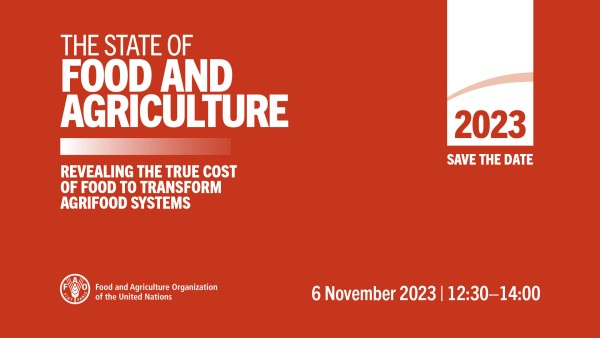Weighing up the cost of food systems: FAO State of Food and Agriculture 2023
A study of the food systems of 154 countries carried out by the Environmental Change Institute has revealed the true cost of food for agrifood systems.
The Food and Agricultural Organisation (FAO) has today published its annual State of Food and Agriculture report (SOFA 2023).
This year’s edition looks at the concept of hidden environmental, health and social costs and benefits of agrifood systems and proposes an approach – true cost accounting (TCA) – to assess them.
The report used research and modelling from the Environmental Change Institute (ECI) at the University of Oxford undertaken by Dr Steven Lord, Senior Researcher Food System Economics and Leader of the Food System Impact Valuation Initiative.
Dr Lord said: “The background research I carried out identified that future economic damages from annual emissions, nitrogen pollution, habitat loss, and unhealthy diets outweighs the gross value add of agriculture. Transforming food systems is an environmental necessity and an economic opportunity.
Dr Lord’s findings were so significant to the discussion that the background information was translated into one of the three chapters of the report (Chapter 2).
Dr Lord added: “The country and regional analyses highlight the global costs of nitrogen pollution. While the future economic damages of climate change have featured prominently, it is less well known that the economic damages of nitrogen pollution from the food system are estimated to be of the same order as the economic damages from food system’s greenhouse gas emissions.
“78% of the atmosphere is nitrogen. Nitrogen biogeochemical flows are essential to life and society. For this reason, people and nature react to large changes to nitrogen flows. The damages from synthetic fertilisers and livestock range from air pollution in densely populated areas to biodiversity losses along waterways and coastal ecosystems.
“Another result of the country analysis is the triple burden that low-income countries relying on agriculture face into the future. The costs of obesity and unhealthy diets in Sub-Saharan Africa and the costs of increasing nitrogen use and land-use change, will surpass the costs of poverty and undernourishment, likely by 2030.
“Low productivity farming practices are also among the most polluting, with economic necessity driving agricultural expansion and habitat loss, and the use of low-quality inputs. Low productivity already limits standard economic development in the present. The growth of countries with a high economic reliance on agriculture but low productivity will be double hit in the future as they bear the environmental and public health costs resulting from current practices.
“Dietary change promises a significant reduction in damages and would make a significant contribution to future economic development and growth. Harnessing the economic potential of dietary change relies on research and investment in what is politically and economically effective to change diets.
“Public health has been fighting the battle against obesity and unhealthy diets for decades, but the additional savings from future environmental costs only adds to the imperative and benefits of food system transformation.”
Dr Lord said other surprising factors came to light during the study, for example cost indicators for agricultural production revealed the UK and Ireland are among the highest cost countries, when you compare the ratios of the costs of GHG emissions and nitrogen emissions to the value agriculture adds to gross domestic product. They have a ratio about 2:1 – £2 of environmental costs that will be borne in the future to every £1 of value add that agricultural production provides to the economy today.
Find out more about FAO’s SOFA 2023 report
Read Dr Lord’s background study in full




